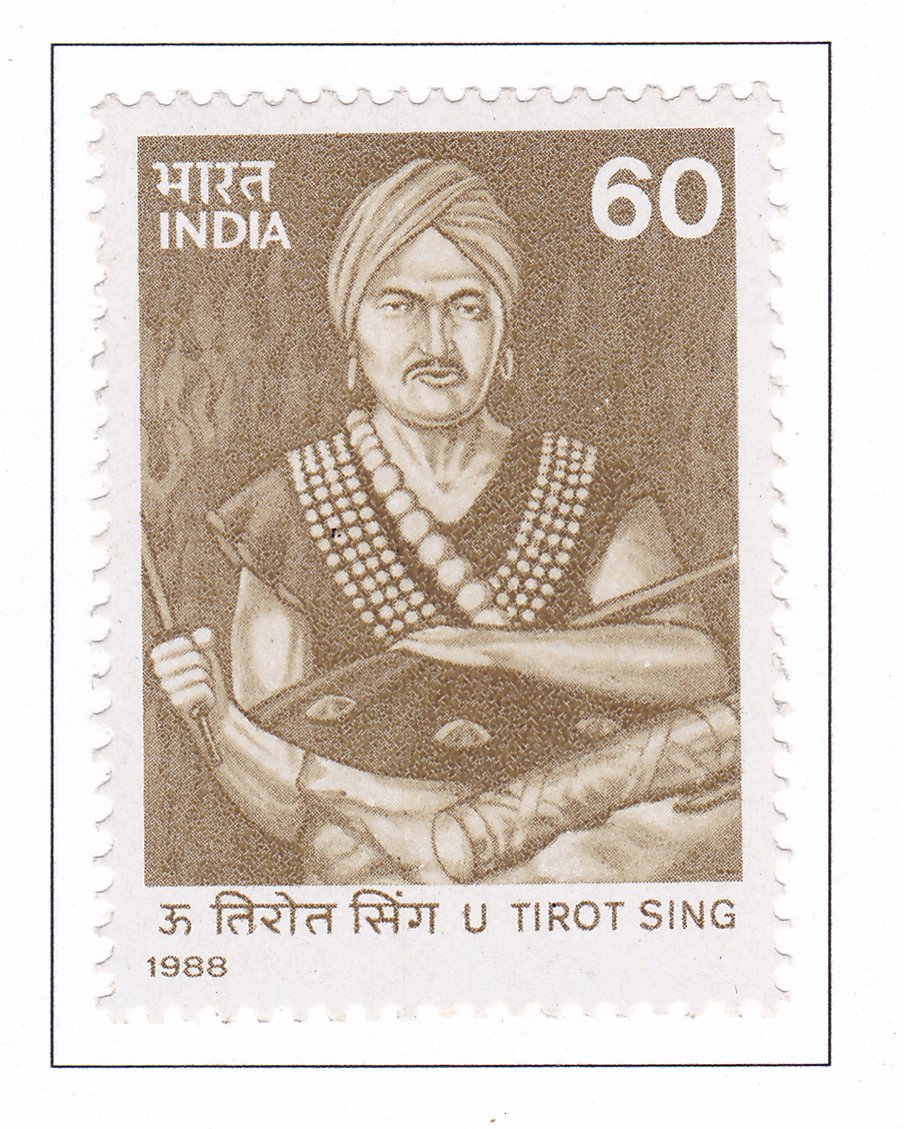U Tirot Sing

Technical Data
| Date of Issue | February 3, 1988 |
|---|---|
| Denomination | 60 p |
| Quantity | 1,000,000 |
| Perforation | comb 13 x 13½ |
| Printer | Security Printing Press, Nashik |
| Watermark | No Watermark |
| Colors | Bistre brown |
| Catalog Codes |
Michel IN 1141 Stamp Number IN 1206 Yvert et Tellier IN 956 Stanley Gibbons IN 1297 |
| Themes | Commemoration | Famous people | Headgear | Independency Activists | Men |
Commemorative Stamp Set: U Tirot Sing
Design Elements:
The stamp set could include multiple stamps featuring:
- Portrait of U Tirot Sing
- Scenes depicting Khasi warriors and resistance movements
- Images of important locations such as Nongkhlaw and Krem Tirot
Cultural and Historical Significance:
U Tirot Sing is a significant historical figure among the Khasi people of Meghalaya, India. He resisted British colonial rule and fought to uphold the sovereignty of his people. His leadership and defiance against the English East India Company symbolize the struggle for indigenous rights and autonomy.
Usage:
The stamps can be used for postage, collections by philatelists, and educational purposes to commemorate U Tirot Sing’s contributions and the history of Khasi resistance.
Importance of the Commemorative Stamp Set:
This stamp set is important as it honors the memory and legacy of U Tirot Sing, ensuring that his role in history is remembered and celebrated. It serves as a reminder of the struggles for indigenous rights and sovereignty in the face of colonialism.
Example of the Stamp Design:
One stamp could feature a portrait of U Tirot Sing in traditional Khasi attire, symbolizing leadership and resistance. Another stamp might depict the landscape of Nongkhlaw with Khasi warriors in action, illustrating the defense of their homeland. The designs would incorporate elements of Khasi culture and history, resonating with both collectors and those interested in Indian history.
Significance:
The stamp set commemorates U Tirot Sing’s courage and leadership in defending Khasi interests against colonial encroachment. It highlights his enduring influence as a symbol of resistance and cultural pride among the Khasi people.
